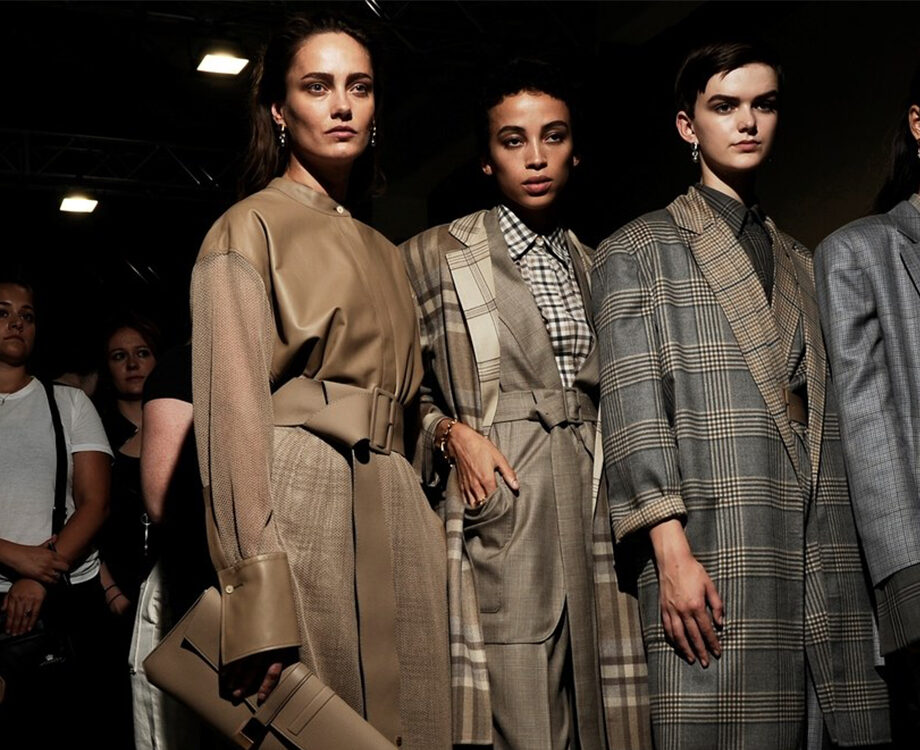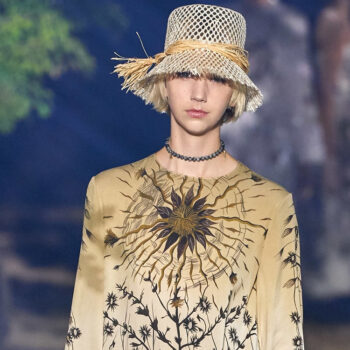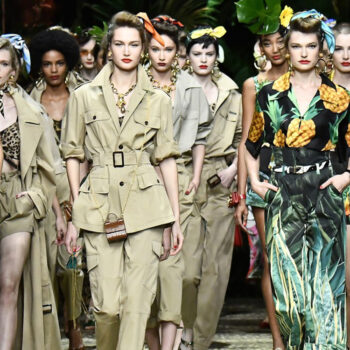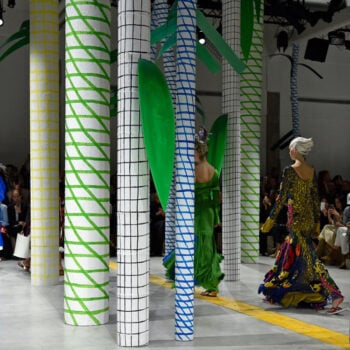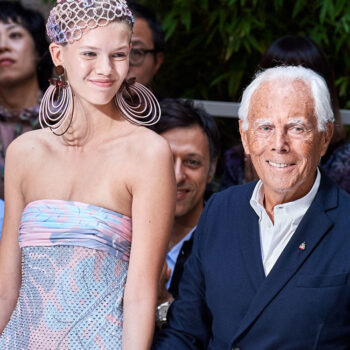In spite of, or maybe because of, the unsettled political situation in Italy, the Milan fashion season was powerful. The overall impression was of all the established houses digging deep into their family histories, either polishing up or re-booting their brand for Spring/Summer 2020https://www.instagram.com/p/B2uvsrNH9xk/?utm_source=ig_embed&utm_campaign=dlfix
Milan is also notable for making a genuine and ongoing effort to reach for a greener world, with Giuseppe Sala, the Mayor of Milan, and Carlo Capasa, President of the Camera Nazionale della Moda Italiana (the Italian Chamber of Fashion) working with Livia Firth, founder of Eco Age. (Capasa and Firth, above, organise the Green Carpet Fashion Awards, held every September during Milan Fashion Week.) Italy, with important mills and factories as well as a tradition of handwork skills, seems to be the first country to make a positive effort.
Ferragamo: Balancing Act
“I put a major focus on making sure that there was a balance between shoes and clothes,” said Paul Andrew, Creative Director of Ferragamo, known famously for its footwear, but less widely for what is worn above.
https://www.instagram.com/p/B2q4tftHz9l/?utm_source=ig_embed&utm_campaign=dlfix“Before I started, there were so many different messages with different designers working on different categories,” he continued. “I hope I have straightened that out.”

It was rather the opposite. Curly shapes had a fresh focus on the body, to fit with the designer’s message of “joyful living”.

This idea of the joys of summer started with a photo on his mother’s mantelpiece of him and his brother on a summer holiday in Italy in the 1980s. This inspired Andrew to “bring back that feeling of fun and sun-drenched innocence into a modern context”.
At a show, it is impossible to grasp what skills have created the ultra-light fabrics, but the sense of movement was overriding.

